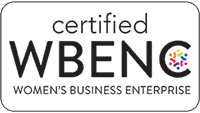Employee wellness programs often look good on paper. But how do you know if they're actually performing well and improving your organization?
No workplace wellness plan is magic without ongoing evaluation. It’s never enough to just launch a program and let it do its thing. Any organization must focus on achieving its wellness program's vision by accurately measuring its progress and adjusting as needed.
You need to focus on the program's results in order to:
—Identify accomplishments
—Justify the program’s existence
—Achieve employee health and wellness betterment
—Ensure the organization’s time, resources, and budget are spent in meaningful ways
One way to evaluate your current wellness program's efficacy is to run it by our 10 best practices.
Best Practices
Our 10 best practices are tools we implement in our programming to offer companies a successful wellness plan. We've briefly highlighted each one to demonstrate how you can put together a personalized wellness solution that gets results.
1. Strategic Plan in Place
A Strategic Plan is a documented commitment to the well-being of employees and their families. It's incredibly important to have your well-thought-out plan on a piece of paper. This plan contains well-being mission and vision statements and program goals and objectives that are regularly communicated to employees and are on display.
Program goals all meet three criteria:
—They are holistic.
—They are SMART goals (Specific, Measurable, Achievable, Realistic, and Timely).
—They are evidence-based.
2. Leadership Support
Effective leadership is crucial to a company's success and employee retention. You wouldn't want to work for someone who didn't care about you or your career, right? Your health and wellness shouldn't be any different.
Leadership includes your human resource department, C-suite, mid-level managers, etc. And leadership support includes well-being programming buy-in, support, and engagement from leadership.
Leaders act as models or champions for the effort, achieve buy-in and support from other levels of their organization, and help cultivate a supportive work environment.
3. Policies Supportive of Well-being
Your corporate-wide policies should support a culture of well-being. These include typical wellness policies such as a tobacco-free workplace, flexible work schedules, and paid time for participation, as well as policies on good wages/benefits, hiring/staffing, proper training, and work expectations.
4. Integrated with Other Resources
Your well-being program should be integrated with organization-specific resources and partners. These can include your insurance broker, Employee Assistance Program, safety, medical, and health plans, and financial/401k plans, along with community resources/partners, like fitness centers, parks and recreation, nonprofit organizations, and training vendors.
5. Champion Network and Committees
A Champion Network is a group of individuals within an organization that distribute promotions and information to employees regarding their wellness program. Its main purpose is to make sure everyone involved is aware of expectations, feedback, and updates regarding the wellness program.
In order to be successful, employee wellness programs need motivated individuals that regularly communicate information, feedback, and promotions to keep everyone excited, engaged, and informed.
6. Comprehensive Programming
Everyone has their own preferences, interests, goals, and motivations. Your employee wellness program should cater to everyone's differences and personal interests — no one wants to participate in a program that was built for the masses.
Comprehensive Programming is when your employee wellness program offers many engagement opportunities with an emphasis on flexibility of choice, convenience, and programming that fits a wide variety of interests.
7. Ongoing Evaluation
Regularly measuring data and recording it to review later can help you see your progress, and it will help you reach your goals if you keep going. Without measurements, you might not realize you’re truly getting somewhere. And that's why Ongoing Evaluation is so important for developing a strong employee wellness plan.
Ongoing Evaluation is when your regular metrics include both your well-being program and any supporting activities/programs you offer your employees. This best practice plays a major role in keeping your employees inspired and motivated — they want to see how they're making progress and how it affects their goals.
Frequently measuring the progress and success of your employee wellness plan will help you see whether or not it's moving forward, is at a standstill, or has fallen behind. This data is useful in helping you make or adjust a plan of action for getting on track.
8. Barrier-free Programming
With some simple changes, you can make your wellness program more inclusive of all individuals, increasing participation and hopefully leading to a healthier, happier workforce. One of the ways you can create an inclusive employee wellness program is by implementing Barrier-Free Programming.
Barrier-Free Programming is when your employee wellness program offers a lot of flexibility in order to make it available and accessible for individuals with a wide range of abilities, needs, and circumstances.
This best practice helps all of your employees feel comfortable and welcomed, and will also encourage them to participate in the program. Providing a safe, inclusive community and accommodations will help improve your workplace culture and, in turn, positively impact employee productivity, retention, and motivation.
9. Well-being is Celebrated
During a health and wellness journey, some employees may deal with sensitive situations they wouldn’t normally speak up about. By sharing success stories of someone who has been in their shoes, you'll consequently develop a support system for your staff.
Celebrating these wins and rewarding your employees will only inspire them to move forward. According to behavioral scientist B.J. Fogg, celebrating small wins stimulates a dopamine release in the brain, the feel-good chemical that reinforces the learning experience and strengthens the sense of connection to people we work with.
Celebrating wellness within your organization requires regularly sharing success stories and program highlights.
Those who take time to reflect on and celebrate their wins are generally more optimistic, take better care of themselves, and tend to be less stressed out.
10. Dependent Participation
Dependent Participation is when your employee well-being program includes opportunities for spouses and family members to participate. Research from Bravo Health shows that when spouses and family members are included in wellness initiatives, employers experience increased employee participation (twice as high) and are more likely to see meaningful, lasting change.
And an employee’s family and friends (spouse, partner, children, extended family and social networks) have the power to encourage healthy behaviors and participation.
Employers who invest time and energy into a strong wellness program can reap the benefits of a healthier workforce — and getting started is easier than you think. Following these 10 best practices can quickly put you on the path toward better wellness at work, for a stronger, more productive company tomorrow. OnSite's tools and resources can get you there. Let’s help you get started.
-1.png?width=300&name=1127895_OSW%20Tagline%20Logo_081021%20(1)-1.png)


